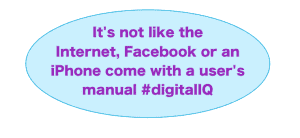Where some management is still hanging on to its guarded precepts and habits (reading good ‘ole fashioned books, sticking to the 4P’s of marketing, management by fear and control…), other businesses are running full head of steam. Some teams just seem to be in the know, having adopted a more adapted mindset. Their cumulative digital IQ is on the rise and the taste buds for new are on high alert. Other teams, meanwhile, seem to talk about change and innovation, but remain resistant to real action. Why is this?
4 reasons for resistance to change
A large part of this failure to mobilize is due to legacy and dealing with one’s historical success. In the past, they proved their ability to overcome challenges and to succeed. {Click to tweet} The second main issue is the management corps and its cultural bias. The third is the difficulty for publicly traded companies to get off the hamster wheel of quarterly results to join the “other” longer-term mindset all the while keeping the wheel spinning. And a fourth major issue is, in my opinion, about management’s digital IQ. It strikes me that the question “how can one know what one does not know” takes on greater significance when management is faced with the constant influx of new technologies and the accompanying new set of rules.
Digital IQ starts at home
Echoing an article on LifeHacker, it is important to experiment and get comfortable with the new technologies — especially when trying to get a grip on the new and evolving consumer digital experience. Too often, at work, management does not find the time, nor the incentive to “practice” these new digital tools and environments. The core of the problem is that it’s not like the Internet, Facebook or an iPhone come with a user’s manual. {Please click to tweet!} On a first level, getting digital in one’s personal life is a good way to stay in touch with one’s own kids. Secondly, by experimenting and experiencing the digital tools as “consumers,” senior management will equip themselves with a better understanding of how to interface and engage with their clients in a more impactful, effective manner. Thirdly, since many of these tools concern communication, some of them will also find their place in the workplace and in the workflow. As the LifeHacker article indicates, some of these tools require “practice” to help exercise and increase one’s digital muscle.
Geeky creativity
On another level, it is hard for senior management to consider the new technologies without being up-to-date with what is going on. At a minimum, it’s important to increase the geek quotient within the business, hiring individuals who are in the know and comfortable with the evolving new technologies. I would call this having geeky creativity embedded within the organization. Once equipped with this knowledge, it becomes easier to conceive and consider inspiring, innovative solutions to today’s business challenges. How is one supposed to imagine how easy it can be to “hire” a crowdsourced advertising agency, or to convert your iPhone into a credit card reader, or scan text and automatically translate it into another language… and so many more.
 Of course, the critical component is having the right mindset, open to exploring these new technologies and, importantly, being able to tolerate the risks associated with trying something new (including having the humility to know when help is required).
Of course, the critical component is having the right mindset, open to exploring these new technologies and, importantly, being able to tolerate the risks associated with trying something new (including having the humility to know when help is required).
Professionalism gets personal
As these points suggest, it is no longer possible nor desirable to separate the personal from professional. In order for digital marketing tools to be fully co-opted by a brand, I believe management needs to get digital themselves. Their customers will feel the difference!
Your feedback and comments are as ever welcome.














Trackbacks/Pingbacks